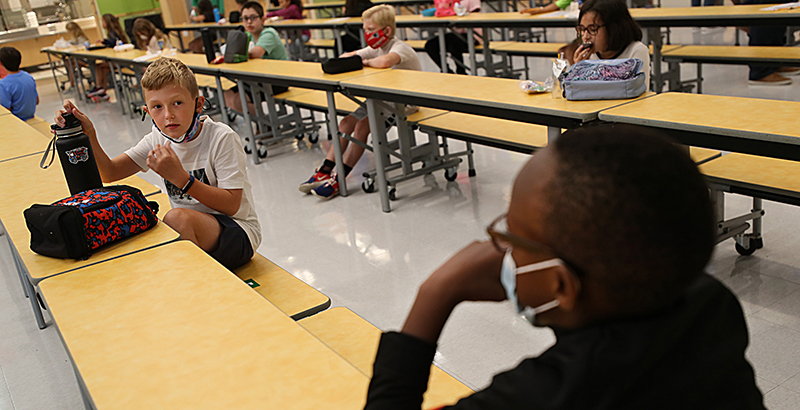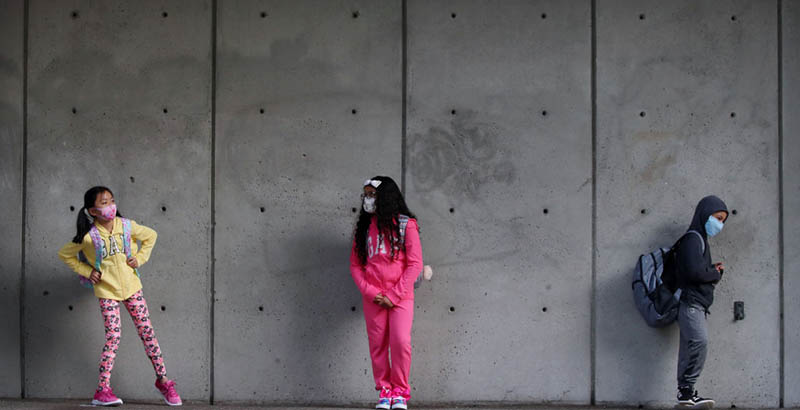2020 Flashback — COVID & Schools: How American Samoa Offered Early Warning Signs About How the Pandemic Would Upend the Education System

One year ago this month America’s education system came to a standstill, as emergency lockdown orders and skyrocketing hospitalizations led to states, cities and school districts shuttering classrooms coast to coast.
By early April, The 74 was prepping the launch of our PANDEMIC reporting initiative, where we’ve so far chronicled more than 300 updates on school closures, campus safety, virtual instruction and the push to preserve and accelerate student learning amid the public health crisis. (See our most recent updates on school reopenings, as well as our look back at the last 52 weeks for students in 52 iconic photos from the pandemic)
Given the anniversary, we decided to take a look back through our archives, to see where we could find the earliest mentions of this new coronavirus that would change so much for America’s students. Most of our initial coverage addressed widely reported issues, such as the mounting anxiety among New York City public school parents who were considering keeping their kids home from class and remote learning growing pains being faced by families in and around the original hot spots in Washington State.
But to our surprise, the very first mention we can find at The 74 concerned events happening some 5,000 miles west in American Samoa — an early development that foreshadowed the many ways the coronavirus crisis would extend beyond classroom instruction to disrupt every other aspect of school communities.
In a February roundup summarizing the key education issues facing the states and territories participating in the Super Tuesday primaries, we learned that American Samoa was already dealing with the realities of COVID-19, and what it meant for their imported food supply and the territory’s school meal program: “Following a recent measles outbreak and rising concerns surrounding coronavirus, the availability of food for schools has emerged as a top priority for American Samoa, the U.S. territory in the South Pacific,” we wrote on Feb. 28.
“Gov. Lolo Matalasi Moliga said he ‘is concerned about the perceived shortages of food items on the shelves of stores, and health care issues — measles and now coronavirus — disrupting shipping schedules to the island.’”
A week later, we began tracing the spread of the virus, and the resulting school closures, across the continental U.S.:
March 9 — Seattle: As coronavirus forces schools to go virtual, we must innovate — and embrace learning as we go. How 1 Washington district at the epicenter is doing just that.
- “Many other school systems in Washington and around the world will soon face a similar emergency situation. It will be critical to learn what it takes to pull this off. What kind of training and support do teachers need? What can parents do at home? How can communities rally to provide additional support to students whose parents cannot stay home? What kinds of safeguards need to be put in place to make sure that students with unique needs don’t get lost in the shuffle? And what happens when life and classrooms return to normal?” (Read more)
March 10 — New York State: In coronavirus ‘hotspot,’ New York Gov. Cuomo orders schools closed. Why the district superintendent resisted the move.
- “The spat over whether to close New Rochelle schools cuts to the heart of a dilemma school districts across the country face amid fear over the spread of COVID-19, the name of the disease caused by the virus. Though education leaders have come under pressure to close schools as a precautionary measure, doing so complicates other school functions, such as providing food for low-income children.” (Read more)
March 13 — New York City: As mayor faced growing pressure to close NYC schools, a smaller change — virtual or by-phone parent-teacher conferences — offered a glimpse into the challenges of going remote.
- “As NYC officials weather increasing calls to shut down the country’s largest school system amid the coronavirus crisis, a smaller experiment that was launched this week — virtual or by-phone parent-teacher conferences — gives some idea of the difficulties that could lie ahead with parent and online communication, particularly in underserved communities. While Mayor Bill de Blasio this week remained reticent to enact widespread closures in the 1.1 million-student district, he acknowledged at a news conference this week that “the DOE is preparing options for online learning.” (Read more)
March 23 — Everywhere: In new database, dozens of school districts share their early plans for teaching, learning and supports during the pandemic. Here’s what the top 12 systems are doing
- “With the vast majority of America’s public schools now shuttered amid the coronavirus pandemic, more than 54 million children have been told that they won’t be attending class for the next several weeks. In many cases, students may be left learning from home through the end of the academic year. In response to this unprecedented wave of closures, teachers, principals and district leaders across the country have quickly hatched plans to ensure that students continue learning through online lessons, e-mailed work packets, classroom video chats and other alternatives.Still, the logistics of getting millions of kids — and also their parents — comfortable with online tools and curricula will be a considerable challenge.” (Read more)
See Our Photo History: 52 Photos, 52 Unforgettable Weeks for Students & Schools
Get stories like these delivered straight to your inbox. Sign up for The 74 Newsletter

;)
